Bishop Moves in Chess
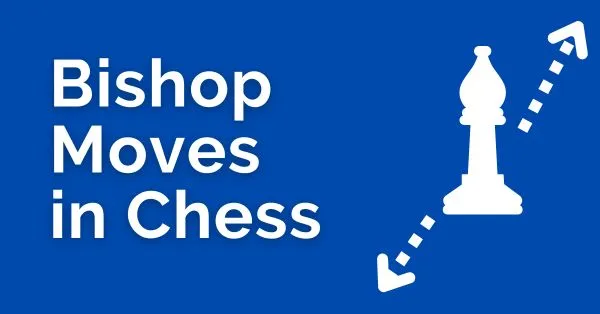
The humble bishop frequently appears as a seemingly constrained piece with diagonal movements. Underneath this apparent simplicity, though, is a world of strategic nuance and expansive potential.
This article covers the fascinating world of “Bishop Moves in Chess.”
We look at how this seemingly innocuous piece can have a big impact on the board, from unexpected attacks to complex positional play.
Bishop moves in chess
At first glance, chess Bishop moves can look one-dimensional. In reality, the bishops are much more dynamic and multi-functional pieces.
The Bishop’s chess movement has been referred to as many things such as the sniper or a Billiard ball. You should not underestimate the simple yet complex functioning of the bishop’s moves.
In the history of chess, There are many stunning bishop moves. One such move is the stunning Ba7 in the game of Karpov vs Unzicker.
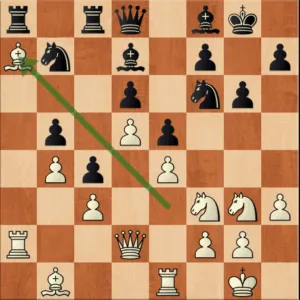
The way the bishop’s movement is transformed from a central piece to an interference piece is something to behold. Yet even in that situation, the bishop beautifully performs the role of a localized restrictor.
What Is a Bishop?
The bishop is a piece that can act over long distances. It is not a localized piece i.e. it can over long distances at will, unlike the knight.
So how to recognize a bishop in the chess set? A Chess piece is made of wood or porcelain and the bishop can be immediately recognized from other pieces.
The Bishop dons a conical top brushed with a semi-diagonal cut. The piece is taller than the knight and rook but shorter than the Queen and King.
Each player starts with two bishops, one on a light square and the other on a dark square.
How do bishops move?
The question for many beginners is how does the bishop move in chess?
The answer is simple. The bishop is a versatile piece that moves diagonally across the board.
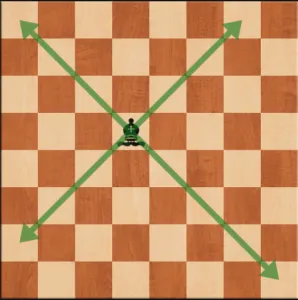
The light square bishop can move to any of the highlighted squares on the board.
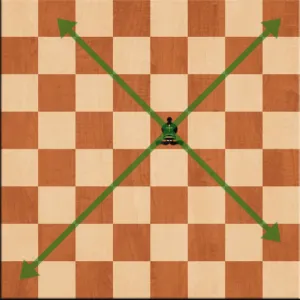
The dark square bishop can move to any of the highlighted squares on the board.
Its color-specific movement allows for surprising attacks, long-range support, and complex maneuvers.
What The Bishop Can’t Do
The Bishop can’t perform two things:
- Jump over other pieces
- Change colors during a game.
Well, one could only imagine how strong the bishops would be if they could do these things.
What is the bishop’s opening?
In the Kings Pawn Opening, e4 there is a development sequence where the bishop is brought out first before the knights. This opening is the Bishop’s opening.
The opening moves are:
1.e4 e5 2.Bc4
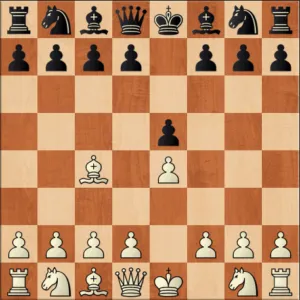
Bishop’s opening chess theory is well developed from the 19th century. It is a perfectly playable opening for club players.
Is a rook more powerful than a bishop?
Well, the answer is not so simple. It depends on the position, the pawn structure, the phase of the game, and the skill of the players.
In most instances, the rook overpowers the bishop. However, there are certain instances where the bishop’s moves in chess can completely dominate the rook.
But in general, we can say that rooks are more valuable than bishops in most situations.
Why is that? Well, rooks have more mobility and can control more squares than bishops. They can also easily switch from one side of the board to the other, while in chess the bishop moves are limited by their color. Rooks are also better at creating threats and pressure on the enemy king and pawns, especially in the endgame.
The best way to decide which one is more powerful is to look at the specific position and evaluate the factors that favor each piece.
Tip: The Rook and Bishop pair up excellently and complement each other during offensive or defensive action.
Can the bishop jump in chess?
NO, The Bishops cannot jump in chess. If the Bishop encounters a piece (friendly or enemy) during its movement, it cannot jump over them.
Top 3 Tactics to Use Your Bishop
The bishop’s ability to traverse the entire board along its chosen color makes it a potent force for controlling key positions and influencing both flanks simultaneously.
A well-utilized bishop can dominate the board, working in harmony with other pieces to create formidable tactics and shape the ebb and flow of the game.
You can use the Bishop moves to execute three prominent tactics. Let’s take a look at them one by one.
1. Fork. The Bishop is an excellent long-range attacker. You can attack two distant pieces at the same time. This is a double attack, also known as a Fork.
Black to Play and Win
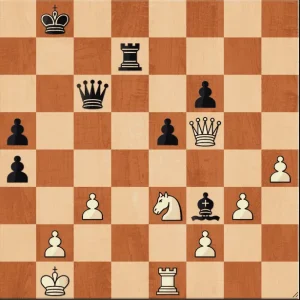
2. Skewer. The chess bishop’s moves ability to move diagonally across the board grants it the power to exploit the alignment of enemy pieces.
By positioning the bishop in a way that targets two pieces along the same diagonal, you can force your opponent into a difficult choice.
If the opponent moves the more valuable piece, the lesser piece is left exposed for capture.
Black to Play and Win
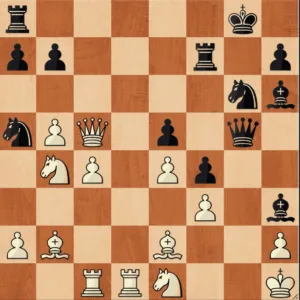
3. Pin. The Pin is one of the most basic tactics. It is a tactic that has enormous practical relevance. It is common to see even Masters miss the power of the pin.
Players use a Bishop move too frequently to pin other pieces. The major pieces can pin as well but the bishop is the ideal piece to perform this task most efficiently.
White to Play and Win after Nxe6 fxe6 Rxe6 Qxe6
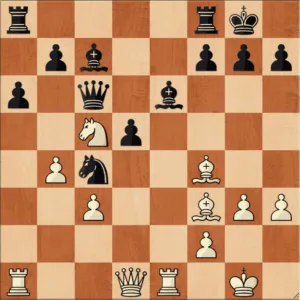
FAQ About Bishops
Can the bishop move backward in chess?
Yes, the Bishop can move backward in chess. The bishops can move forwards and backward any number of times along their diagonal. The only piece in chess which cannot move backward is the pawn.
What is the meaning of bishop in chess?
The bishop in chess derives its name from the Christian Clergy. In chess, a bishop refers to one of the six different types of pieces on the board. Each player starts the game with two bishops.
What is the function of the bishop in chess?
The bishop’s function in chess is to move diagonally along its color. A Light square bishop moves along light squares and a Dark square bishop moves along dark squares.
Can you checkmate with a king and a bishop?
It is NOT possible to checkmate with a King and Bishop vs Lone King. This is because the King alone cannot cover all the escape squares.
You might also like How Chess Pieces Move: Complete Guide as well as Attacks on Diagonals.



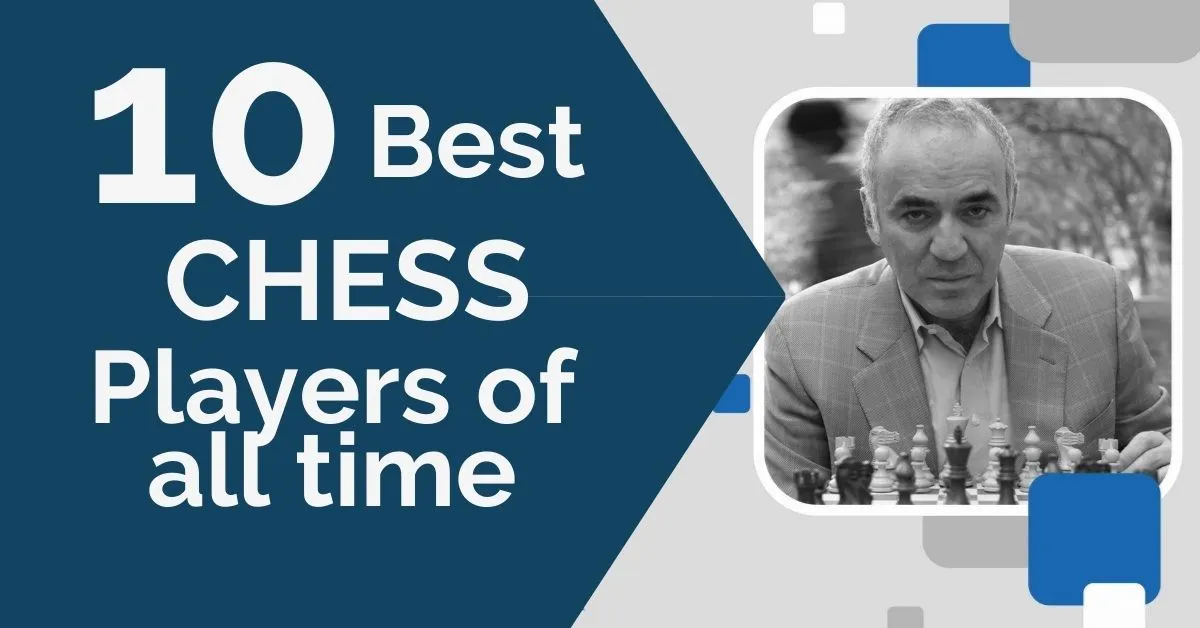
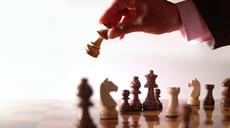
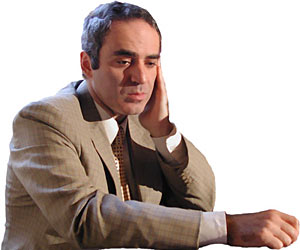




Comments: